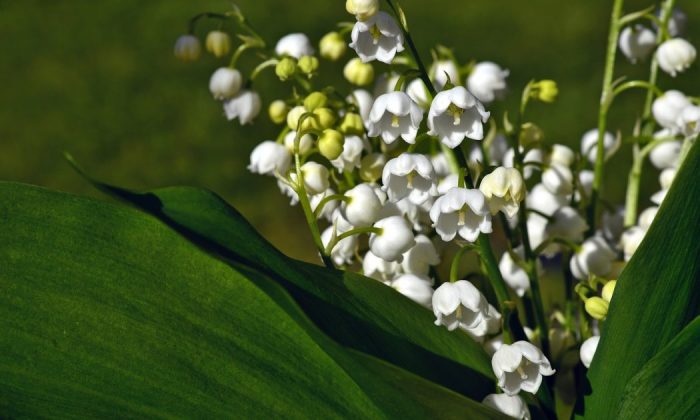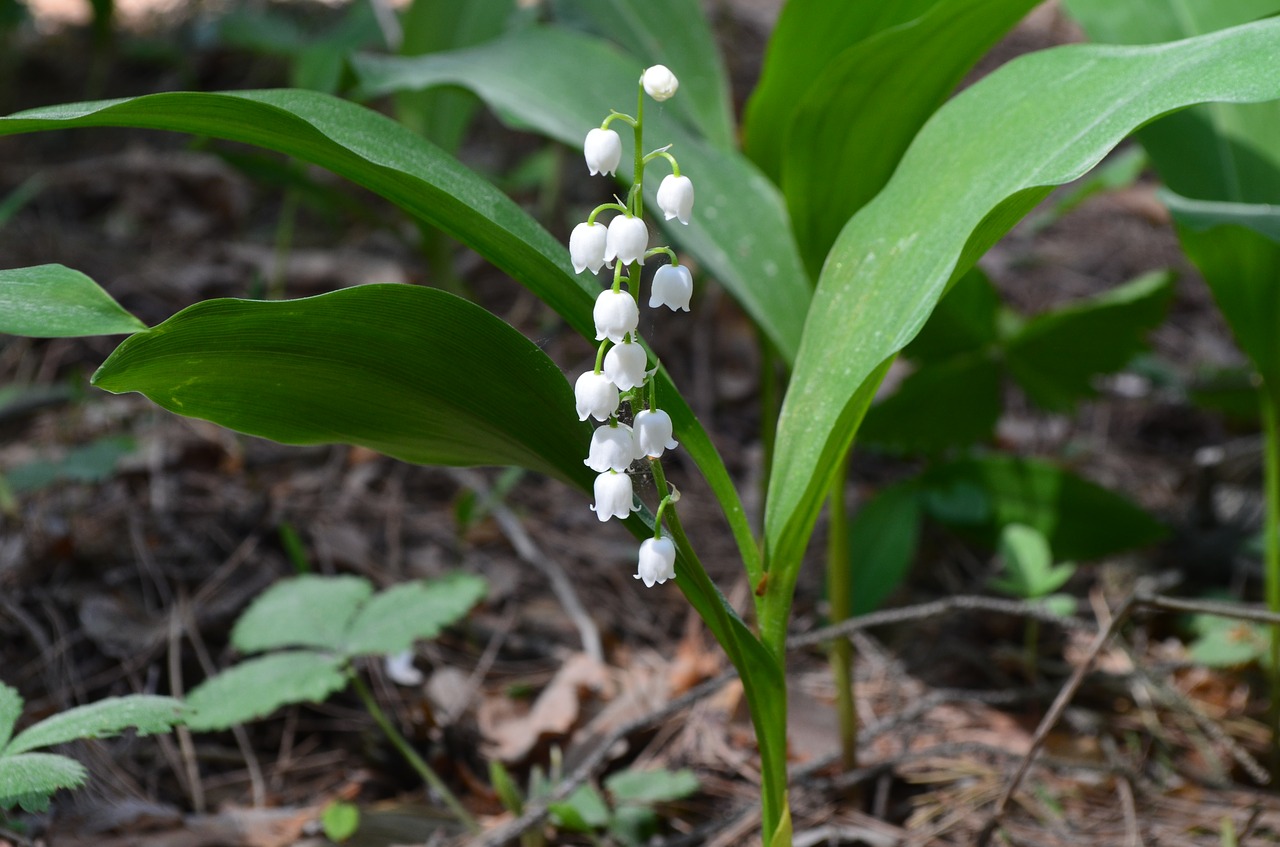Lilies of the valley. Step-by-step growing guide

Lily of the valley (Convallaria L) is a rather interesting botanical genus, because its only representative is the aromatic lily of the valley Convallaria majalis. It is a well-known little plant typical for bell-shaped small white flowers. Many people love this adorable little flower but do not forget that it is poisonous! Well, just in case you want to taste it, but you also need to be careful around pets or small children.
Lily of the valley – colour
We all know those adorable little white flowers that give out a wonderful smell. There are also species that boost other colours for example, light pink. Lily of the Valley is most beautiful in a full bloom. Leaves have typical shape, which resembles leaves of wild garlic, which is edible of course, but make sure that you have the right plant before you use it in the kitchen. Rub leaves gently between your fingers and if they give off a garlicky smell then you are fine and you may eat it. Lily of the valley leaves are green, sometimes with light stripes or edges.
Photo: Pixabay
Growing lily of the valley
Lily of the valley is a perennial that blooms from April to June. In July the plant produces red berries, 8 to 12 mm in size. Berries are poisonous too… (even to some animals). If you want to grow lily of the valley then go right ahead. It is a very undemanding plant. It even prefers partial shade or even shady spots so, you can also grow it under certain ornamental shrubs or trees. It needs a well-drained soil (you can add sand if needed) and the pH should be between 4.5 and 6.
Planting
Plant individual seedlings 10 to 20 cm apart from each other and to a depth of approximately 10 cm. Cover with soil and press down lightly. Water immediately.Lily of the valley spreads quite easily and it definitely does not need your help. You may even want to “tame” it a bit from time to time. You can also grow lily of the valley in a flowerpot where you can curb the growth easily. The flower pot should be around 12 cm in diameter and the soil should be moist at all times. The ideal growing temperature is around 20 °C.
Care
The only care lily of the valley needs is abundant watering. You should also protect it from strong sunlight. Remove flowers after flowering. Leaves give the plant a very attractive look – even without flowers. You do not really need to fertilize but you may add compost in spring.
Propagation of lily of the valley
As mentioned previously, under right conditions lily of the valley will spread easily by itself. If you want to propagate it, do so in June and July. Bulbs of the plant are not deep in the soil and you can easily separate them from the large bunch and transplant them. Lily of the valley is a tough little plant and separating bulbs will not hurt it.
Source: https://twojogrodek.pl/Konwalie-uprawa-i-pielegnacja
Preview photo: Pixabay

Gardening is my hobby, I have a lot of experience and I am happy to share it.









0 comments